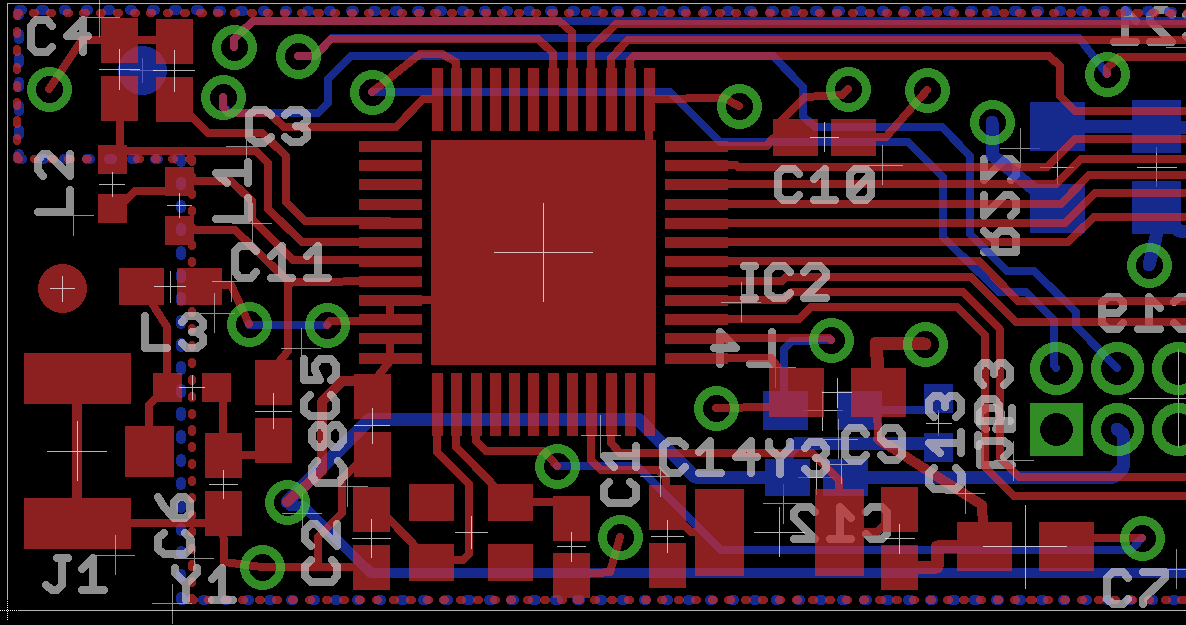 (/attachment/41972e0db37f912bba4731a3b5ffe839)(/attachment/0838bef738e72c89e2a9af90d6e3f640)(/attachment/a62ce68db8c9d23b285a9f94a5c9beac)I have been developing on the nRF51 DK for some time with no trouble. I am using nRFgo studio to erase and flash softdevice s130. I am using uVision for development and flashing applications.
(/attachment/41972e0db37f912bba4731a3b5ffe839)(/attachment/0838bef738e72c89e2a9af90d6e3f640)(/attachment/a62ce68db8c9d23b285a9f94a5c9beac)I have been developing on the nRF51 DK for some time with no trouble. I am using nRFgo studio to erase and flash softdevice s130. I am using uVision for development and flashing applications.
Now, I have a custom board with an nRF51822 QFAC on it and cannot seem to get the BLE module working. The schematic was basically copied from the nRF51 DK and implemented on our custom board. I am programming the custom board through the JLink on the nRF51 DK. When I open nRFgo studio, I am able to see the device (nrf51822 as opposed to nrf51422 for the dk) and program the device. I am also able to program the device from uVision, but only if the the chip has been erased in nRFgo Studio first.
I am confident that the code is loading to the device, as I am able to toggle a GPIO pin and step through he code using the JLINK debugger. My issue arises when my application attempts to interact with the ble stack. The device hangs upon trying to initialize anything related to ble.
My thoughts on potential causes:
-
the softdevice could be getting loaded into the incorrect place in memory. Do I need to change any linker setting to get this to work? Are the nrf51422 and nrf51822 memory maps compatible? Is there an issue loading from nrfgo studio compared to uvision.
-
When looking at the 16MHz crystal pins on the processor, I cannot find a valid sin wave. I am able to run code on the device, but I am not sure if this requires the 16MHz clock or just the internal RC oscillator. I have my settings such that the NRF_CLOCK_LFCLKSRC is set to use the internal RC oscillator.
-
Are there other configurations or target settings that I need to do in order to switch from the DK to a custom nRF51822 board?
Thank you!


